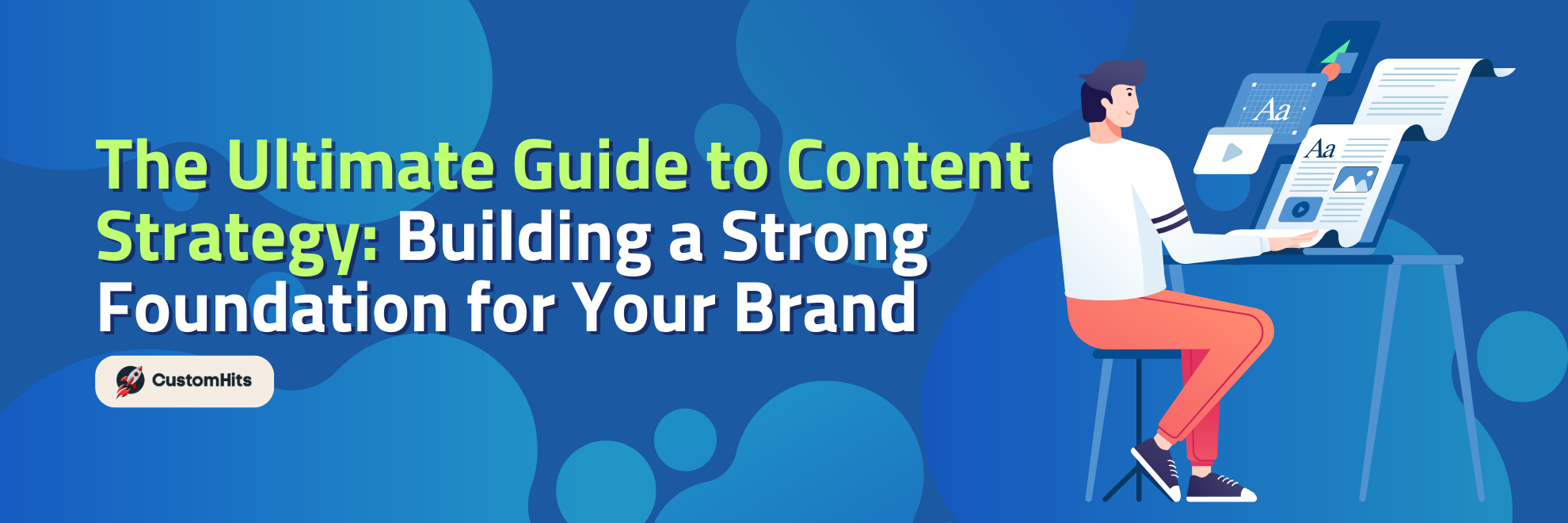

Overview
Content
The Ultimate Guide to Content Strategy: Building a Strong Foundation for Your Brand
In the digital age, content is king. But even the best content won't yield results if it isn't backed by a robust content strategy. A well-crafted content strategy not only guides the creation, distribution, and management of your content but also ensures that it aligns with your business goals and resonates with your target audience. This blog post will walk you through the essentials of content strategy, helping you build a strong foundation for your brand's online presence.
What is Content Strategy?
Content strategy is the planning, development, and management of content—written or in other media. It is a critical component of your marketing strategy, focusing on the consistent delivery of high-quality content that supports your business objectives. Content strategy is not just about creating content but also about understanding why you're creating it, for whom, and how it will be used to drive business goals.
Why is Content Strategy Important?
A content strategy is vital because it:
- Aligns with Business Goals: Every piece of content should serve a purpose, whether it's driving traffic, generating leads, or building brand awareness.
- Ensures Consistency: A strategy helps maintain a consistent brand voice, style, and quality across all content, which is crucial for building trust and credibility.
- Optimizes Resources: By planning your content in advance, you can ensure that your resources (time, budget, and manpower) are used efficiently.
- Improves Audience Engagement: A well-targeted content strategy helps you create content that resonates with your audience, leading to higher engagement and conversion rates.
Key Components of a Successful Content Strategy
1. Audience Research
Understanding Your Audience: The first step in creating a content strategy is to know who your audience is. This involves creating detailed buyer personas that represent your ideal customers, including their demographics, preferences, pain points, and behavior.
Audience Segmentation: Segment your audience based on various criteria such as age, location, buying behavior, and interests. This helps in crafting personalized content that speaks directly to different segments.
2. Content Audit
Assessing Current Content: A content audit helps you evaluate the performance of your existing content. Identify what’s working, what’s not, and where there are gaps.
Content Mapping: Map out your content to the different stages of the buyer's journey (awareness, consideration, decision). This ensures that you have content that addresses the needs of your audience at each stage.
3. Content Goals and KPIs
Setting Clear Objectives: Define what you want to achieve with your content strategy. Your goals could range from increasing brand awareness to driving more traffic or improving SEO rankings.
Measuring Success: Determine the Key Performance Indicators (KPIs) that will help you measure the success of your content. This could include metrics like page views, time on page, social shares, conversion rates, and more.
4. Content Creation and Management
Content Planning: Develop an editorial calendar that outlines what content you will create, when it will be published, and on which platforms. This ensures a steady flow of content and helps in managing your content creation efforts effectively.
Content Types and Formats: Decide on the types of content (blog posts, videos, infographics, eBooks) and formats (long-form, short-form, interactive) that will best engage your audience.
SEO Integration: Incorporate SEO best practices into your content creation process to improve visibility and reach. This includes keyword research, optimizing meta tags, and ensuring mobile-friendliness.
5. Content Distribution
Multi-Channel Approach: Distribute your content across various platforms, including your website, social media, email newsletters, and third-party sites. Tailor the content to fit the platform’s specific requirements and audience.
Promotion Strategies: Use a mix of organic and paid promotion strategies to amplify your content’s reach. This might include social media ads, influencer partnerships, and content syndication.
6. Content Maintenance
Regular Updates: Continuously monitor your content’s performance and make necessary updates to keep it relevant and accurate.
Repurposing Content: Extend the life of your content by repurposing it into different formats, such as turning a blog post into a video or an infographic.
7. Analytics and Optimization
Performance Tracking: Use analytics tools to track your content's performance against the set KPIs. Google Analytics, SEMrush, and social media analytics are some of the tools you can use.
Continuous Improvement: Based on the data, refine your content strategy over time to improve results. This could involve tweaking your content creation process, trying new content formats, or shifting your distribution strategy.
Final Thoughts
A well-thought-out content strategy is the backbone of any successful digital marketing effort. By understanding your audience, setting clear goals, and continuously optimizing your approach, you can ensure that your content not only reaches the right people but also drives meaningful results for your business. Remember, content strategy is not a one-time task but an ongoing process that requires regular attention and adjustment.
Start building your content strategy today, and watch how it transforms your brand's online presence!
